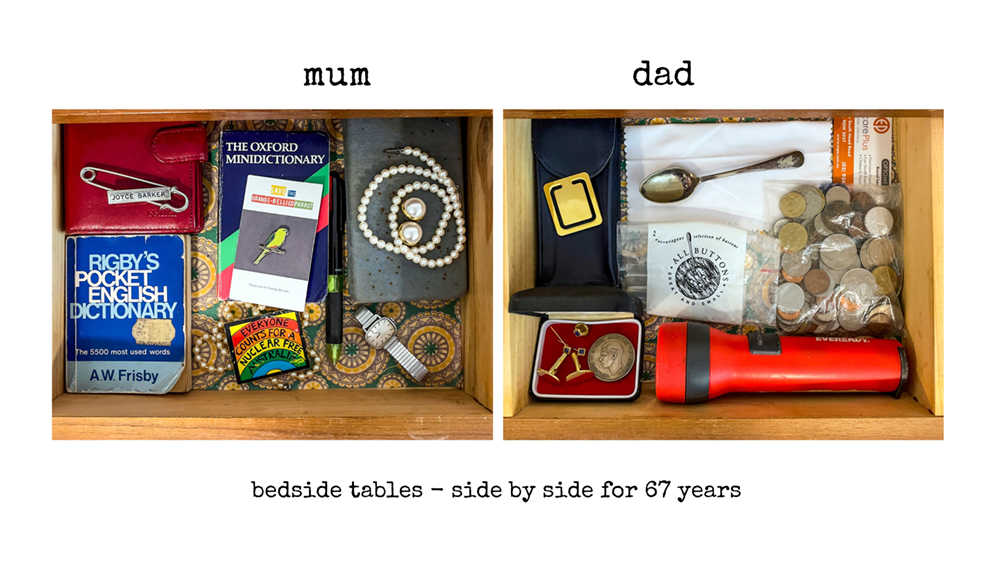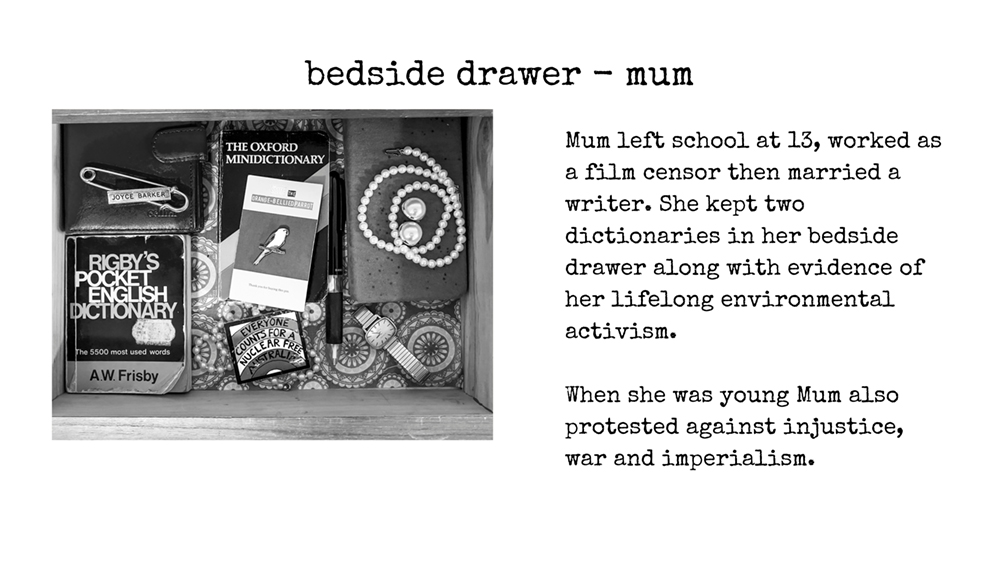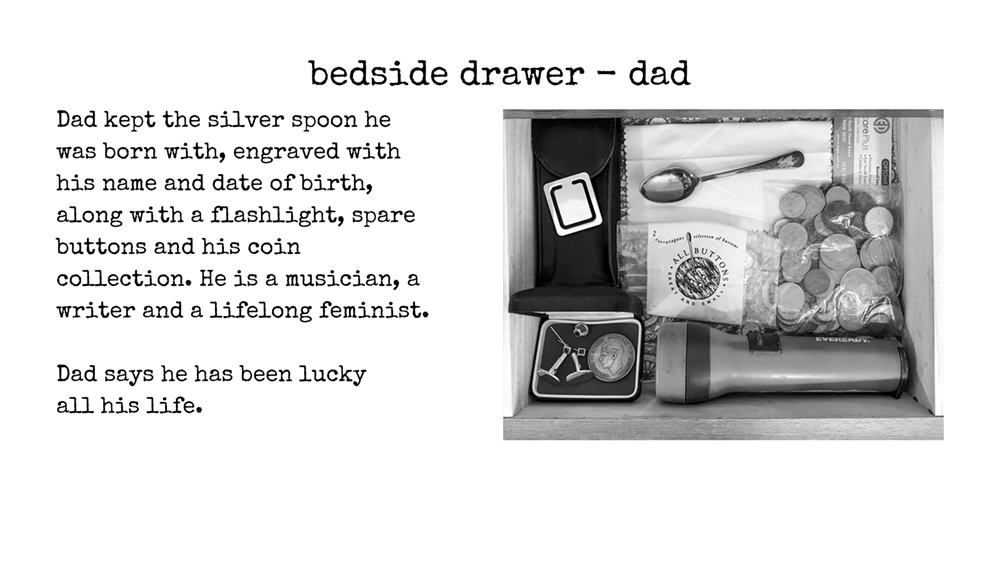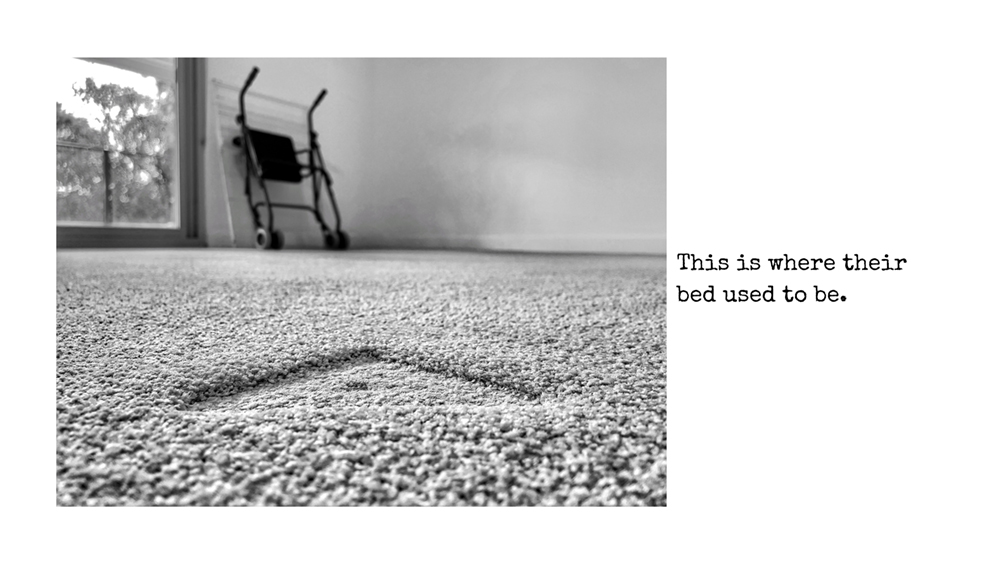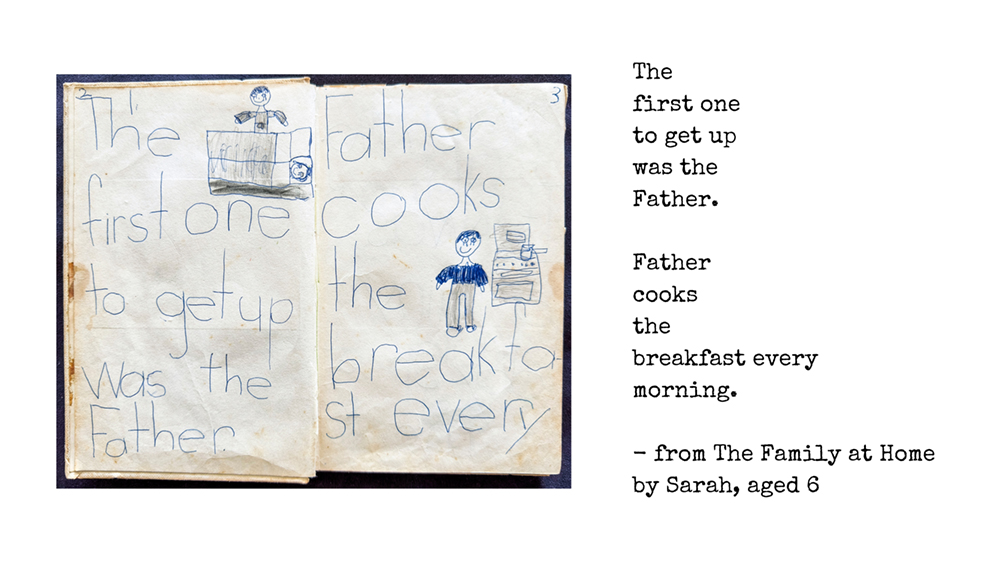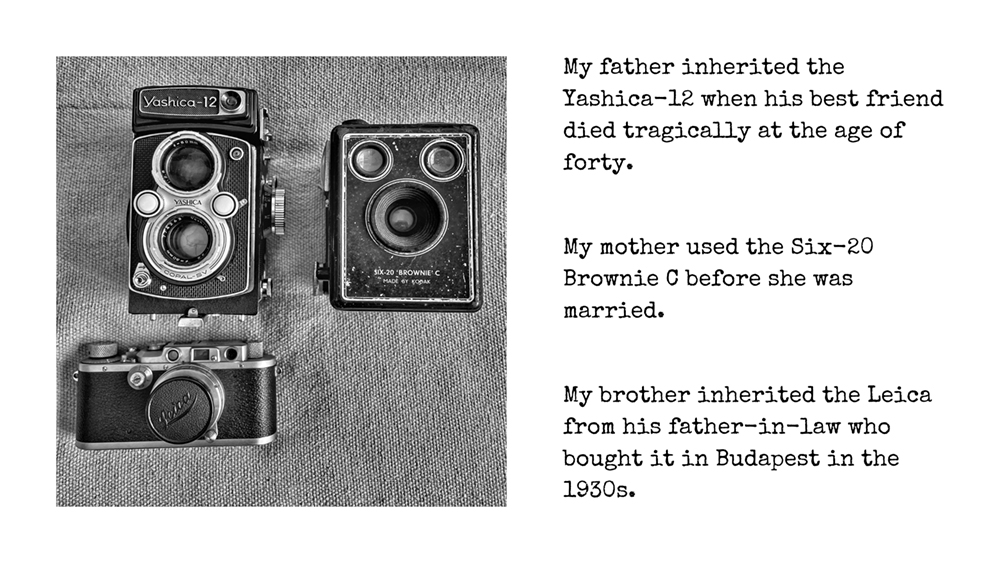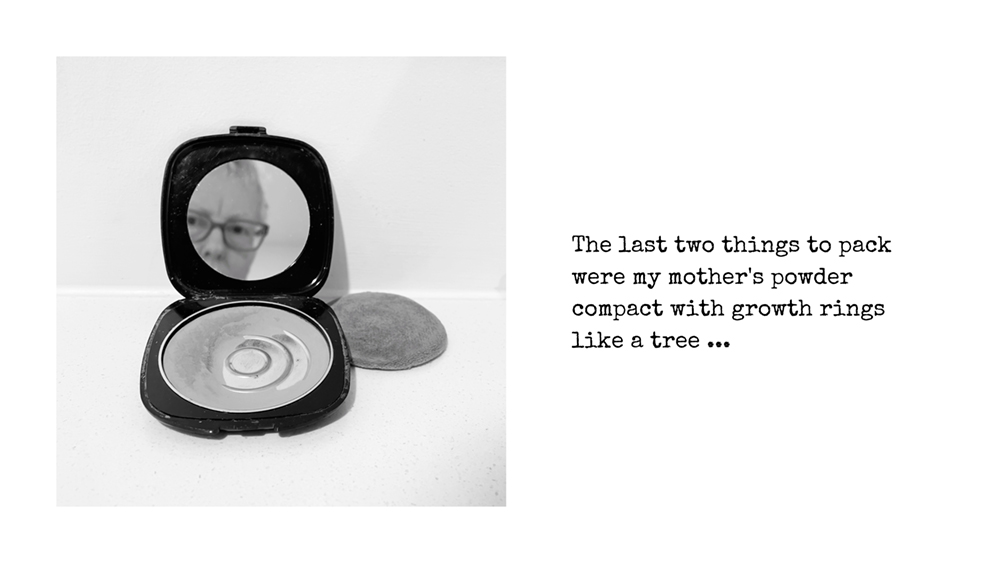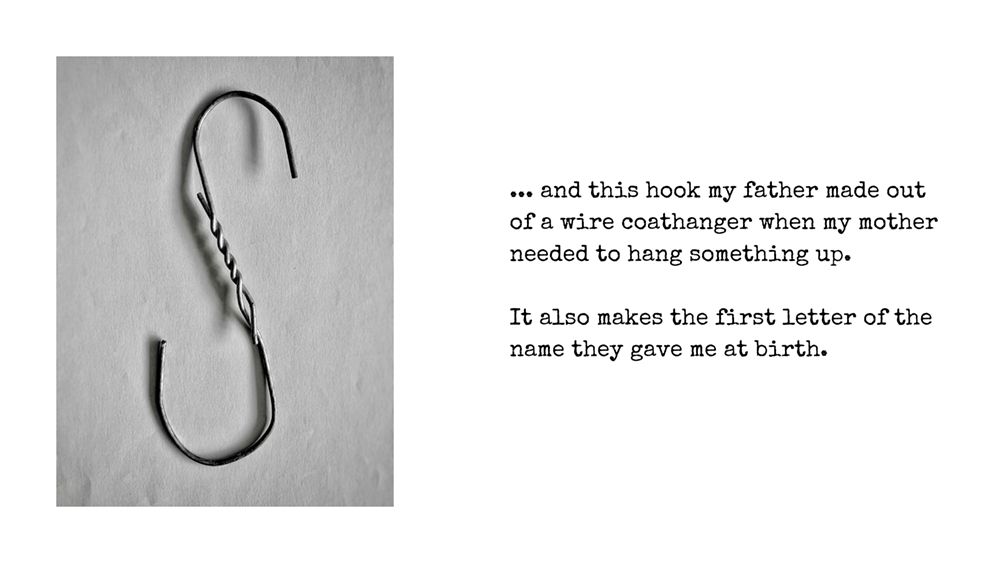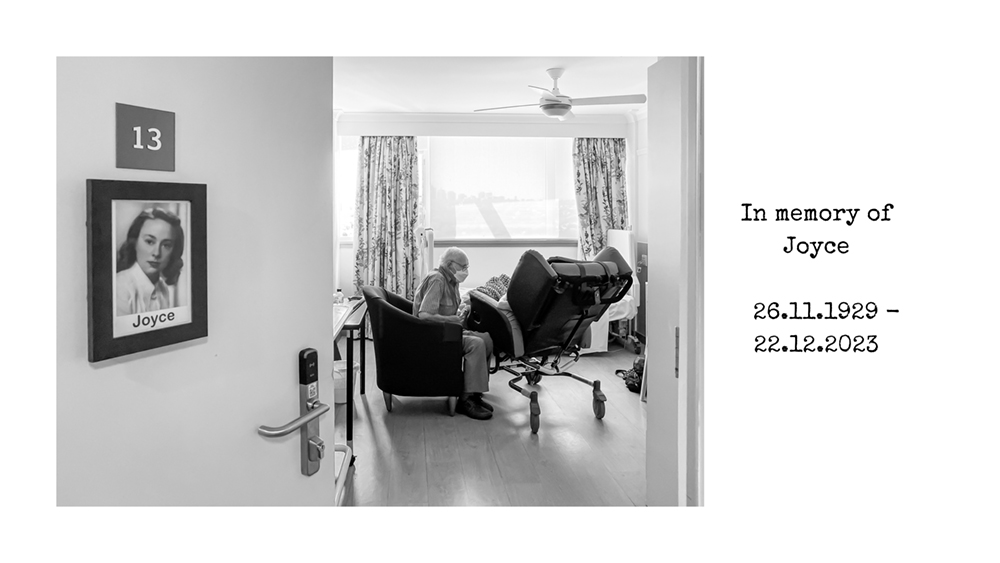Focus on Aging: Sarah Barker: Inventory
By Beate Sass and Ruth Steinberg
When we invited artists to respond to our call for projects about aging, little did we anticipate that every photographer who submitted would be highlighting their parent’s story. This should not have come as a surprise. Statistically, we are living longer than previous generations, however, our social and health services have not caught up to this reality. The impact of this omission is that the care for our elders has fallen increasingly to their children to oversee or manage hands-on themselves. Although our experiences in photographing our loved ones are varied, one commonality we shared is that we became caregivers, to various degrees, to one or more parents. We also recognized that as the end of life neared, the time spent with our parents was even more precious, and yes, at times challenging and frustrating as we navigated a world of elder care that is tragically under-resourced.
People are living longer and healthier lives, yet elders often experience physiological changes in vision, hearing, mobility, and cognition which can lead to a loss or reduction in capacity. How we define capacity can be more generous than just considering the losses. Assistive devices, such as hearing aids and walkers, specialized senior programs, and hiring direct support professionals, enhance capacity and the enjoyment of life. We’ve witnessed many of our parents adapt to quieter pleasures and simpler joys, which gives those of us who support them an important lesson on how aging can still offer delight, no matter what stage of life one is in.
As photographers, we can show aging in all its expressions: there is no “one size fits all.” This series of five projects honors our parents, those still with us, and those who have passed. We celebrate how they lived, and how they continue to embrace life, despite their losses and challenges.
Sarah Barker makes portrait, street and social documentary photographs. She has been a finalist in awards, selected for group exhibitions nationally and internationally, and her photographs have been acquired by the State Library of NSW (Australia). In 2023 Sarah was the winner of the IPA People/Family category, with her photograph titled “Joyce” (the final image in this submission). In 2021 Sarah was the winner of the Street Photography category of The Lucie Foundation Guardian Project and in 2013 she was the joint winner of Tap Gallery’s “Out of my Pocket” mobile phone competition and winner of its People’s Choice Award.
Instagram: @sezwhophoto
Inventory
In August 2022 I packed up the retirement village home of my 92-year-old parents for their final move to higher-level aged care.
My mother had already moved into high-level care during the Covid lockdown, after having a fall. It was the first time in his life that my father had ever lived alone. My father later moved into assisted living, in the same aged care facility as my mother, after finding it too difficult to live alone even with at-home assistance from aged care workers and family.
As I didn’t grow up or live in their retirement village apartment, I didn’t feel nostalgic for the building or location. It was their belongings, familiar from my childhood, that had the resonance of place. Photography helped me process this transition.
Interview by Sarah Barker
By Beate Sass and Ruth Steinberg
We love how you have told your parents’ stories by photographing their belongings and what was left behind upon their move into assisted living. How did you arrive at the decision not to photograph your parents?
The concept arose while I was photographing items to give away online that my parents weren’t taking with them when they moved house. Photographing the items being given away, like the dining suite, helped me to let go of them. As I was doing this I also came across items that triggered strong childhood memories, such as my mother’s cookbooks and my father’s CD collection, that were going into storage or moving with my parents.
I didn’t include photographs of my parents in this project because it’s about the emotional attachment to belongings and how connected we can be to others through inanimate objects.
Months later when Elliot Erwitt died, I revisited his book The Private Experience: Elliot Erwitt which I’d been given when I was a teenager. As soon as I opened that book, I was transported back to the first time I looked at it and was moved by A unique portrait of Pablo Casals, without the maestro. It had broadened my understanding of portraiture all those years ago. That Elliot Erwitt photograph played a small part in the creation of this work.
In viewing, Inventory, we learn so much about each of your parents by looking at the ephemera you photographed and your accompanying text. What was your process in combining the imagery with text?
Packing up my parent’s belongings was such an emotional process for me. Sometimes my memories and reactions took me by surprise. I wanted to capture as much of my emotional reaction as possible. The accompanying text helps to gently direct the viewer to the essence of why these belongings, and the process of moving them on, was so emotional for me. I was mentored through this process during a Kinship Photography Collective “Practice Group” on combining text and image facilitated by photographer, Neil Kramer.
You mentioned that you had no attachments to the objects and the space in which you photographed because your parents had already moved out of the family home years before. How did this project resonate with you on an emotional level?
I had no attachment to the apartment my parents were living in as I’d never lived there. It wasn’t our family home. We had packed that up and moved them ten years earlier. That had been such an emotional experience because it was the house I grew up in. I wasn’t expecting to have a big reaction to this move. The emotions surfaced as I interacted with my parents’ belongings which still had connections to my childhood and our family home. Photographing their marital bed to give away, and removing the items they’d kept in their bedside drawers was touching, physically and emotionally. It affirmed and revealed an intimacy about each of them.
Are you photographing your parents as they continue their journey? If so, what draws you to do so, and if not, why?
Yes. I was drawn to photograph my mother the first time she was receiving palliative care, about three years ago. It was my way of communicating with her when she was unable to communicate. She then made an unexpected recovery and I continued to photograph her regularly up until a few days before she died, just before Christmas 2023.
What sparked the idea to create a short film with the photographs you took?
I made the video to convey the flow of life. The movement of time, moving house, being moved emotionally, that life is fluid and moving.
How has bearing witness to the aging process of your parents influenced your attitudes about aging?
Although my parents have always been unsentimental they appreciate how privileged they are to grow old and are grateful for the supportive environment they live in. I feel fortunate that they realised it was best to move into higher-level aged care when they still had a choice about where to go and how to do it. Sharing their experience with them helps me to navigate my future.
What influenced your decision to move into the retirement community that your parents had moved out of?
I moved into this community for very practical reasons; affordability and I live alone. It’s social housing owned and administered by a not-for-profit organisation which means that the well-being of residents is a priority. My parents were grateful and happy to live in this community so it seemed like a logical step for me to make. It also worked very well during Covid lockdowns as I could continue to support them. I’ve had mixed reactions to my move, everything from shock to affirmation. At the end of the day, it’s a supportive community, much like a giant share-house, and I have a magnificent view.
Beate Sass is a photo-based artist whose imagery is inspired by the Southwest region where she grew up and her experience as a mother and advocate of a daughter with a disability. Beate is not only drawn to capture the essence and beauty of her subjects but to also utilize her knowledge of visual storytelling to highlight and amplify the voices of those who are often overlooked. Most recently, Beate has turned her camera to the natural world and seeks to capture the peace and beauty found in wild places.
Beate’s photography has been featured in solo and joint exhibitions including The Museum of Contemporary Art of Georgia and the Southeast Museum of Photography. Her projects have been published in Lenswork, Oxford America, and South x Southeast Photomagazine. She has also self-published two zines and created a large-scale installation that was displayed in her hometown of Decatur, Georgia.
Instagram: @beatesassphoto
Ruth Steinberg is a photo-based artist who uses the camera as a tool to open doors to conversation, uplifting the voices of her subjects. Through visual storytelling she examines facets of dignity, resilience, and presence, with particular focus on the elderly. Her work has been shown across North America and internationally including the Karsh-Masson Gallery in Ottawa, LACP: Centre of Photography in California, PhotoPlace Gallery in Vermont, and FotoNostrum, Mediterranean House of Photography in Barcelona. In 2017, as part of an intergenerational chain of mentorship, Steinberg was selected to exhibit in Continuum: Karsh Award artists welcome a new generation. In 2022 she received the first place for the Figureworks Exhibition and in 2023 she was a Photolucida Critical Mass 200 finalist.
Instagram: @ruth_steinberg_photographs
Posts on Lenscratch may not be reproduced without the permission of the Lenscratch staff and the photographer.
Recommended
-
Martin Stranka: All My StrangersDecember 14th, 2025
-
Interview with Maja Daniels: Gertrud, Natural Phenomena, and Alternative TimelinesNovember 16th, 2025
-
MG Vander Elst: SilencesOctober 21st, 2025
-
Photography Educator: Josh BirnbaumOctober 10th, 2025
-
Aiko Wakao Austin: What we inheritOctober 9th, 2025


